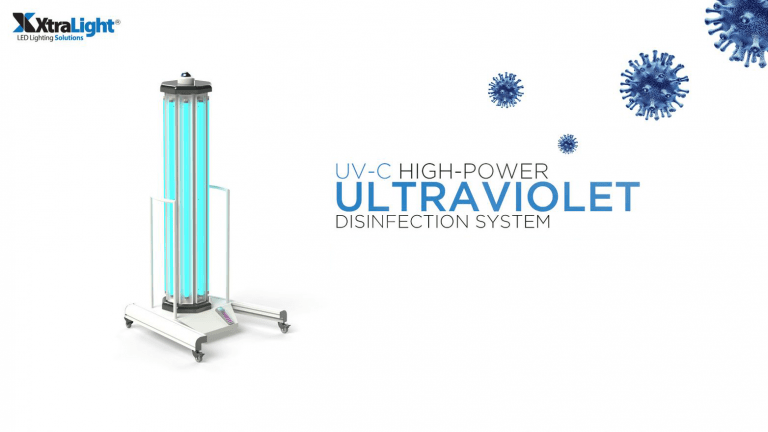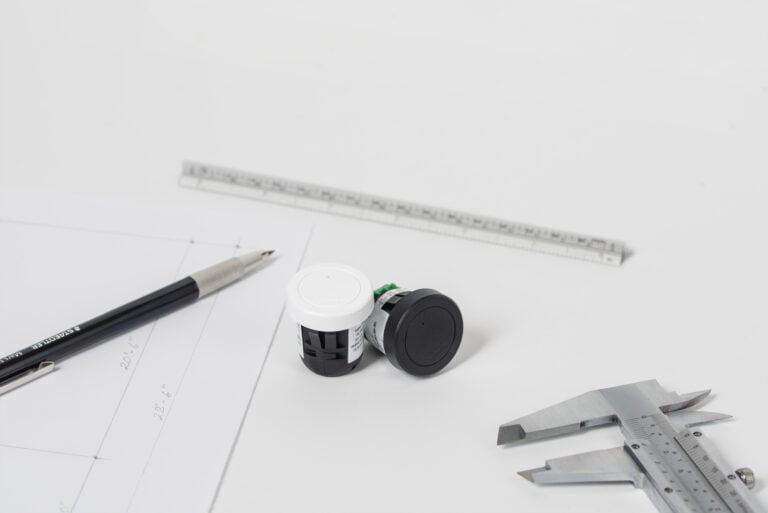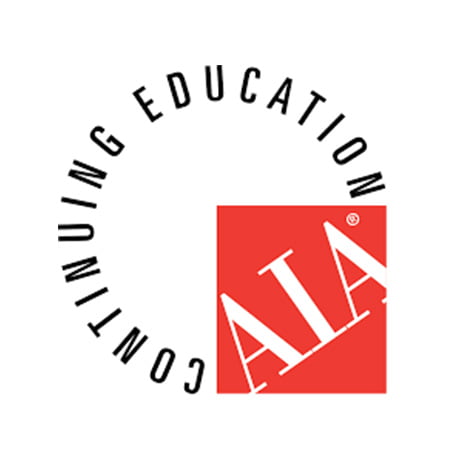Ultraviolet (UV) light has been studied in a myriad of ways since its discovery in the 1600s. Initially, observations were done from sunlight and its chemical reactions to different properties over time. With the advancement of technology, scientists were able to study UV in greater detail and simulate environments to study the effects of UV radiation.
ATypical Light
The visible spectrum of light ranges in 400-700nm (nanometers), whereas UV light ranges from 180-400nm. In other words, UV light and its radiation are invisible.
UV radiation is classified into 3 different categories: UVA, UVB, and UVC: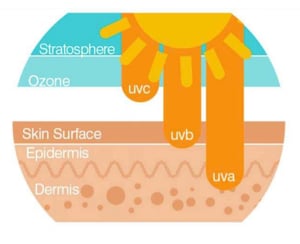
• UVA (315-400nm) penetrates the middle layer of skin (dermis) and is linked to long-term skin damage, such as wrinkles.
• UVB (280-315nm) reaches the outer layer of skin (epidermis) and damages DNA in skin cells directly. These rays are thought to cause most skin cancers.
• UVC (180-280nm), often referred to as Germicidal, is almost completely absorbed by the Earth’s ozone layer. Humans typically are not exposed to UVC radiation unless from an artificial source. It has been proven to kill 99.9% of surface bacteria.
Today, manmade UV light has additives so we can see the light (most notably in colors of blue or purple), much like the way odor is added to gas.
Basics of UVC
UVC light, also known as Germicidal Ultraviolet (GUV), has been used as a sanitation technique since the early 1900s. Today, we use UVC for water purification, air disinfectant in HVAC units, as well as surface sterilization.
Hospitals have long used UVC light technology to sanitize tools and surfaces. It has been proven to effectively kill 99.9% germs and prevent the spreading of infectious pathogens. While UVC light cannot “kill” viruses per se, it can “inactivate” them by disrupting the bacteria’s DNA structure that allows them to duplicate.
There are different types of UVC devices to choose from: handheld, mobile, ceiling, upper-room, and whole room. These devices are best used on the surfaces within an open space. The light will turn on for a set amount of time before shutting off and being moved to the next area. Its germicidal effectiveness will depend on how strong the light is and the duration on the surface – what we call “dosing”. This is typically measured in mJ per cm2.
To calculate the duration of dosage needed for proper disinfection, you will need to know the surface area, your device’s UV intensity, as well as how far the device is placed. Without getting too technical, a general rule of thumb is to have at least 50 mJ/cm2. This dosage will deactivate the most common pathogens. Today, most UVC devices will come with dosimeter cards to help the user validate the dosage used upon the surface. XtraLight has written a great resource to reference.
It is important to bear in mind that while UVC light can effectively sanitize and disinfect surfaces, it cannot penetrate dirty surfaces (ie. dust, fluids) or reach the underside/recesses. To inactivate the bacteria, it must be directly exposed to the UVC light. As such, it is advised to use UVC light sanitation in addition to other disinfection techniques.
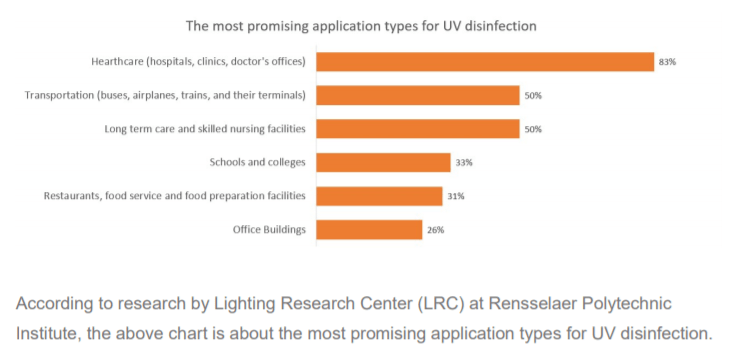
Challenges and concerns
In addition to dosage challenges, the general concern for UVC is the risk in health & safety. The amount of risk is wholly dependent on the amount of UVC as well as the duration. It is important to follow proper installation technique and usage instruction. Failure to do so may result in painful and potentially long-term health issues.
While UVC does not penetrate as deep as UVA, it can potentially cause long-term damages to the eyes and skin. Some UVC lamps will emit small amounts of UVB, and exposure to high dosages or prolonged exposure to low dosages can contribute to cataracts or skin cancer.
Another challenge is ozone generation, which can cause respiratory issues in the nose, throat, and lungs. Those with asthma or allergies are more prone these issues as inhalation of ozone may cause respiratory irritation or infection.
Direct exposure of UVC to the skin or eyes can cause painful burns. You should never look directly at the UVC source. Those handling the devices should have proper training and be wearing appropriate protective gear, including but not limited to eye goggles, plastic or glass face shields, gloves, and full-coverage clothing. In items, prolonged exposure may degrade surface paint, plastics, or dull shiny finishes.
What’s new in UVC?
Today’s COVID-19 climate has dramatically changed the way we function. New design tends to focus on touchless and well-ventilated spaces to account for flexibility in social distancing. The UVC market was generally geared towards the medical community for use in healthcare facilities and certain HVAC product lines; however, COVID-19 has spurred need for cost-efficient UVC equipment accessible and safe for an end user. Germicidal UV light usage has been encouraged as an amenity for air purification and surface area hygiene.
While UVC cannot “kill” a virus as previously stated, it can drastically improve air quality and prevent the spread through airborne movement. The University of California Santa Barbara’s Solid-State Lighting & Energy Electronics Center has been analyzing ways to create a portable, toxin-free LED UVC device for the end user. It will potentially be able to disinfect PPE (personal protective equipment) for reuse.
You can read more about their research here and its development here.
Learn more
Health Effects from Radiation from the Center for Disease Control and Prevention (CDC)
Germicidal Ultraviolet FAQ from Illuminating Engineering Society (IES)
UV Light Disinfection & COVID-19 FAQ from the International UltraViolet Association (IUVA)
Tips on Choosing UV Equipment from the IUVA
Far-UVC Light Inactivates Airborne Human Coronaviruses from NatureResearch
History of Ultraviolet Photobiology from Philip E. Hockberger of Northwestern University
UV Radiation FAQ from the US Food & Drug Administration (USFDA)
UV Light Disinfection & COVID-19 FAQ from the USFDA
About Western Lighting and Energy Controls
In business for over two decades, Western Lighting and Energy Controls is an employee-owned representative agency in Southern California whose dedicated teams offer an unparalleled level of service and support. These teams work to ensure that project requirements and unique business needs are delivered on time and within budget. With its uniquely proactive approach, Western serves customers in a way that has achieved maximum growth and success.
Western Lighting and Energy Controls partners with top manufacturers for lighting, controls, and energy management. Among those manufacturers are CALIVE, Xtralight and ZLED all of which offer UVC products within their product line.
– UV Product FAQ from CALIVE.
– UVC Disinfection System from XtraLight.
You can contact Western Lighting and Energy Controls here.

